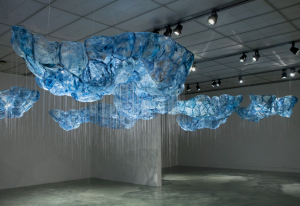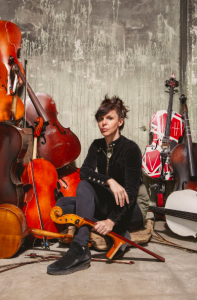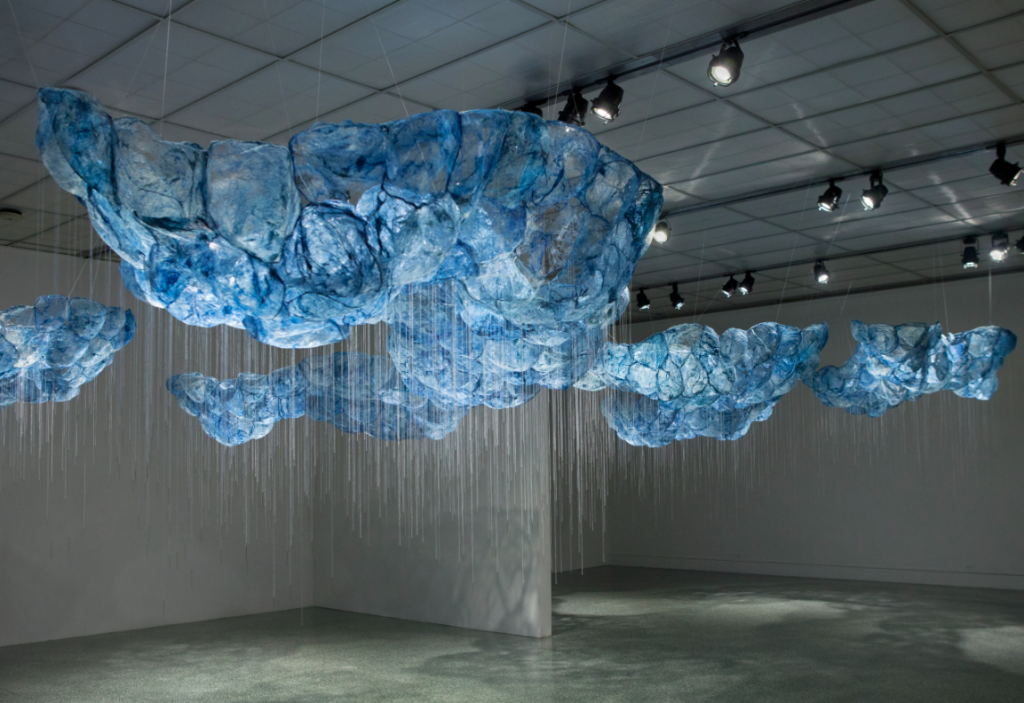
Mending the Sky brings together eleven artists to respond to a world in distress. The exhibition borrows its title from a Chinese fable in which a rip in the sky causes the earth to split open, bringing floods, fires, famine, and disease—until a goddess takes on the arduous task of mending the broken sky.
Working across the fields of art, animation, and performance, these artists shift conversations, challenge entrenched views, and subvert the established order. Their work gives shape to the aftermath of chaos and calamity, building towards a more equitable future by helping us envision the new world that might rise in the wake of disaster. Considering the crucial actions of care, healing, and coming together, each of them recognizes that we must address past problems and remedy present issues in order to forge a new path forward. With roots in Brazil, China, the Dominican Republic, Jamaica, Vietnam, India, Europe, and the American South, each of these artist projects are also acts of world-building that offer us a glimpse of a future we cannot yet see.
BEILI LIU
After All/Mending the Sky
Beili Liu’s After All / Mending The Sky, which inspired this exhibition’s title, draws upon the ancient Chinese fable of Nüwa, goddess and creator of mankind. After a rip in the sky brings suffering and calamity to her creations, Nüwa mends the sky. The installation links this heroic effort with the humble task of sewing—both endeavors of mending and healing.
Nine suspended, organic, cloud-like forms, each composed of translucent half domes crafted from raw silk fiber, are imprinted with the cyanotype process, more commonly used to produce photographic prints, to lend each a distinct rich indigo hue. Thousands of sewing threads descend from each cloud, and at the end of each is a sewing needle, as if asking each of us to pick up a needle and get to work. After All/Mending the Sky seeks to show us that the individual actions of each and every one of us can add up to something transformative.
FIRELEI BÁEZ
the trace, whether we are attending to it or not (a space for each other’s breathing)
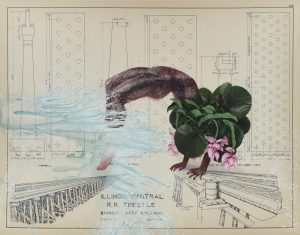
Firelei Báez, the trace, whether we are attending to it or not (a space for each other’s breathing), 2019, Acrylic, oil, and transfer on archival printed canvas, 90 x 114 3/8 in., Museum purchase, Carmen Donaldson Fund, Courtesy of the artist and James Cohan, New York, Photo by Phoebe d’Heurle, © Firelei Báez, 2019.34
Firelei Báez’s fierce, often fantastical portraits of women blur the lines between past, present, and future. Here, Báez paints a a ciguapa—an elusive and cunning creature from Dominican folklore—onto a 1930s-era map of New Orleans made by the Works Progress Administration. Creating a bridge with her body, the ciguapa bends over an architectural plan of the Illinois Central Railroad Trestle to unite both sides of the tracks. Crossing historical lines of segregation, this figure also evokes the role of this railroad line—which runs between New Orleans and Chicago—in the history of the Great Migration, during which over six million African Americans moved from the South to urban centers in the Northeast, Midwest, and West.
Báez’s paintings show how we are rooted in history, but also how we can become untethered—and liberated—from the past. As the artist has shared about this painting’s main figure, “She is quite literally bridging and forming space for communities to be able to carve out belonging and breathe.”
DIEDRICK BRACKENS
If you feed a river
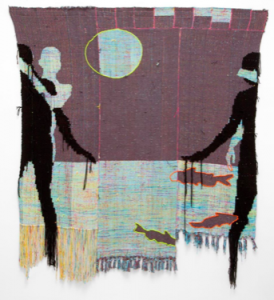
Diedrick Brackens, If you feed a river, 2019, Museum purchase, Carmen Donaldson Fund, 2019.61 © Diedrick Brackens
Diedrick Brackens mines weaving as a potent metaphor for new ways of imagining individual and cultural identity. If you feed a river features a split and doubled black figure, cut up and then pieced back together, hovers on the margins of both sides of the weaving. The figure is connected by a river and encircled by catfish that swim beneath a broken but mended sun.
Catfish often appear in Brackens’s weavings as ancestral figures or spirit guides. Brackens builds new mythologies around these often ignored creatures, interested in their centrality to Southern culture and cooking, as well as the way they are often dismissed as bottom feeders, seeing them as metaphors for other marginalized groups. As the split black figure reaches across the river to unite with their other half, we realize that the form hovering behind them is the river itself, working to bring the broken halves back together.
HELEN GILLET
Helen Gillet is a singer-songwriter and surrealist-archeologist who explores synthesized sounds, textures, and rhythms using an acoustic cello. For Mending the Sky, Gillet will weave together a soundscape using cello, drum machine, sounds in nature, loop pedal, poetry and storytelling. Across a series of three solo performances, Gillet will explore the vibrations of sonic disturbance: the tipping points where swollen rivers of human tension and natural imbalances flood the banks of an unsustainable society. Responding to quarantine, friction and trauma, Gillet’s performances will search for homeostasis and seek to create spaces for empowerment as she responds musically to the artists and ideas explored in the show.
Each of these solo performances will take place within the exhibition Mending the Sky and stream for free across NOMA’s social media channels to offer a wide audience an intimate musical experience at a time when few opportunities for live music exist.
HEIDI HAHN
Burnout in Shredded Heaven
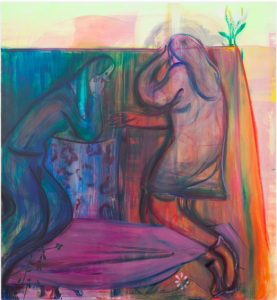
Heidi Hahn, Burnout in Shredded Heaven, 2018–2019, Oil on canvas, 80 x 74 in., Museum purchase with funds provided by Kevie Yang, 2019.60, © Heidi Hahn
Heidi Hahn carves out new spaces of being and belonging for the women depicted in her work. Her layered, paraffin wax-infused paintings draw their viewers into intimate, psychologically charged spaces. She often organizes her figures in poses that faintly recall famous paintings of women from art history, but she paints them as ethereal outlines—echoes of the often showy, sexualized poses more typical of how women are represented in art.
Hahn shrouds her figures in secrecy, describing her paintings as spaces where “nothing is solidified or easily definable.” She blends her figures into canvases saturated with color that blur the lines between where bodies end and the surrounding atmosphere begins. Emphasizing their interior emotional lives over their external physical forms, Hahn’s paintings give these women the right to refuse, and the ability to evade our efforts at full apprehension. These women deny their viewers possession of their bodies or emotions, engaging in a conversation just between the two of them—one reaching out for the other—whose meaning we cannot know.
ANA HERNANDEZ
A Sense of Memory
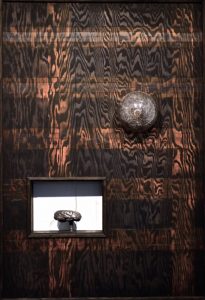
Ana Hernandez, A Sense of Memory, 2015, Cast metal, found glass, found wood, found metal, found nails, steel wire, steel wool, oil pastel, wood stain on found wood panel in artist’s frame, 60 x 41 x 14 in., Museum purchase, © Ana Hernandez
Ana Hernandez created A Sense of Memory from wood she salvaged from the back of a bookcase she found behind the Canal Street Church in New Orleans. Staining a stark grid atop this piece of found wood panel, she creates a pattern that goes against the wood’s natural grain. Burning symbols for musical repeats into the stained wood, she explores the recurring patterns and rhythms of nature, as well as the role of repetition in our thoughts, memories, and dreams. Showing us the patterns that can constrict our thoughts and actions, A Sense of Memory also asks how we might break these patterns to form something new.
Fused into the panel are two glass and metal forms that evoke the human body, contrasting our lived experiences with our inherited knowledge and wisdom. Hernandez sees her work as part of a search for what she calls “patterns of alignment:” connections between people and nature, science and spirituality, and between and among different cultures. Everywhere in her work oppositional patterns meet and merge to form something new: clashes are made into communion, becoming ways of unifying body and mind.
BASEERA KHAN
Braidrage
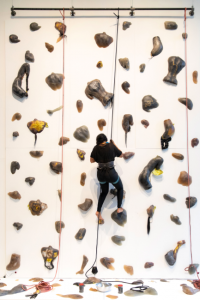
Baseera Khan, Braidrage, 2017–ongoing, Indoor rock-climbing wall made from 99 unique poured dyed resin casts of the corners of the artist’s body, embedded with wearable Cuban chains, hair, and hypothermia blankets, Dimensions variable, Collection of the artist, Installation view at the University of Albany, Photo by Ariana Sarwari, © Baseera Khan
In Braidrage, Baseera Khan scales a rock-climbing wall made from resin casts from the corners of the artist’s own body, exploring not only their own personal history, but current events, spirituality and consumerism. The endurance and movements required to climb the fragments of their body in Braidrage reflect the constant maneuvering necessary to overcome experiences of trauma, and channel them into new forms of resistance. The holds of the rock-climbing wall are dyed brown and black, and embedded with objects of cultural significance, including silver and gold wearable chains, hair, and pieces of hypothermia blankets. A thirteen-foot braid of human and synthetic hair falls from the ceiling like a climbing rope — a commentary on the wig industry, wherein the commodification of certain Indian women’s hair is a humanitarian problem.
Khan activates the installation through performances—captured on video or performed in real time—in which they climb the wall, covering themselves in charcoal so that each of their movements leaves a trace behind. Mending the Sky premieres this new video work, edited by New Orleans based filmmaker Marion Hill, and created so that that this performance can still be seen at a time when the artist cannot travel and a crowd cannot gather to experience it in person all at the same time.
THAO NGUYEN PHAN
Mute Grain
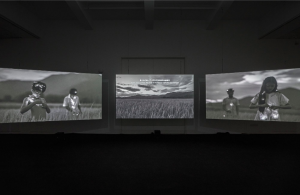
Thao Nguyen Phan, Mute Grain, 2019, Three channel video installation, 15:45 mins, loop, black and white, Collection of the Artist © Thao Nguyen Phan
Mute Grain tells the story of the death from starvation a young woman named August, who is unable to move on to the next life, and thus becomes a hungry ghost. Combining film and hand-drawn animation, Mute Grain explores the little-discussed 1945 famine in Vietnam, which took place during the Japanese occupation of French Indochina (1940–1945). This famine is believed to have caused the death of more than two million people in the Red River Delta of North Vietnam.
Told from the perspective of two adolescents, Mute Grain weaves oral histories from the time with magical elements borrowed from Vietnamese folk tales and chronicles. Throughout the film, August keeps her human form, appearing between layers of time and space together with her brother, March, who anxiously searches for her. For Phan, food security has emerged as an issue at the center of many crises, causing great struggle and suffering. In today’s global political situation, with famine raging in different parts of the world and hunger on the rise, Mute Grain tells a story of great urgency.
JAMILAH SABUR
Un chemin escarpé / A steep path
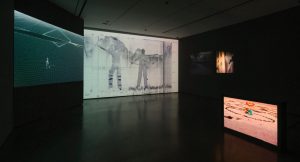
Jamilah Sabur, Un chemin escarpé / A steep path, 2018, Five-channel video, Installation from the Hammer Museum, Color, sound, 10:27 min (Edition 1/2), Museum purchase, Carmen Donaldson Fund, Courtesy of the Artist and Nina Johnson, Miami. Photo by Jeff McLane © Jamilah Sabur, 2019.35
Un chemin escarpé / A steep path is a five-channel video installation that draws upon metaphysics, geology, and familial ties to reframe the landscape and history of the Caribbean. Miami-based artist Jamilah Sabur embodies a shape-shifting figure that passes through and communes with various sites and geographies. Adopting the role of explorer, Sabur reimagines a figure often associated with the violence of colonialism as a source for uncovering new histories.
Throughout, Sabur carries a rhomboid object, a shape that comes from the architecture of her mother’s childhood home in Jamaica. This shape references metaphysical travel, it is a portal where Sabur can traverse multiple locations. In one sequence in the film, the artist navigates an animation of the Vema Fracture Zone. This geological feature is part of an underwater mountain range that is now creating a new seafloor by pushing the continents away from each other to make the Atlantic Ocean larger. In this phenomenon, Sabur sees the potential for a new planetary literacy, one in which submerged histories come into being and alternate geographies become possible.
CLARISSA TOSSIN
Where the River Meets the Sea
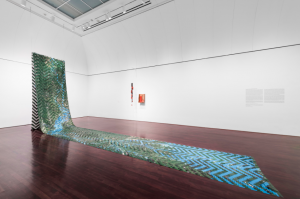
Clarissa Tossin, Encontro das Aguas (Meeting of Waters), 2016-2018, Woven archival inject print on vinyl, 4 ½ x 50 feet, Collection of the artist, © Clarissa Tossin
Where the River Meets the Sea weaves together imagery from the world’s longest rivers: the Nile, the Amazon, the Yangtze, and the Mississippi. Uniting them into a single flow, Clarissa Tossin combines satellite imagery from the delta regions of each river to consider how these bodies of water connect an entire system of global trade. Deltas are the pathways through which people, goods, and cultures come and go, existing at the line between the local and global. Tossin reflects on the way these regions have been shaped by histories of colonialism, and the more recent impact of international shipping companies such as the Amazon corporation, whose name is derived from the river and rainforests of her native Brazil.
Existing at the intersection between traditional weaving practices and contemporary digital technology, Where the River Meets the Sea brings the warmth and connection of the human hand to our fragmented digital age. The weaving asks us to reimagine our relationship to this network of waterways not as sites of exploitation, but instead as sources of global solidarity and strength.
LORNA WILLIAMS
Lore

Lorna Williams, Lore, 2017, Plaster teeth, vines, plumbing hardware, light fixture, 64 x 32 x 72 in., Museum purchase © Lorna Williams
Lorna Williams is a sculptor from New Orleans who treats the body as her primary tool, subject, and site of expression. Her sculptures are meticulous combinations of unlikely and often provocative material juxtapositions, intricately constructed with elements drawn from her own life and the world around her. She combines materials ranging from raw wood, hardware tools, bike parts, root systems, music instruments, ropes, bird’s nests, and snake skins. Exploring the relationship between and among these materials, her work assembles, arranges and connects them in order to explore what she calls “the cross-section of personal narrative, cultural heritage, and a shared human condition.”
Lore is an assemblage of roots, everyday materials and cast plaster teeth that visualizes how our ancestors speak to us, and through us. The sculpture considers how our roots help form our identities and ways of being in the world, exploring the relationship between the stories we inherit and the mythologies we construct for ourselves.
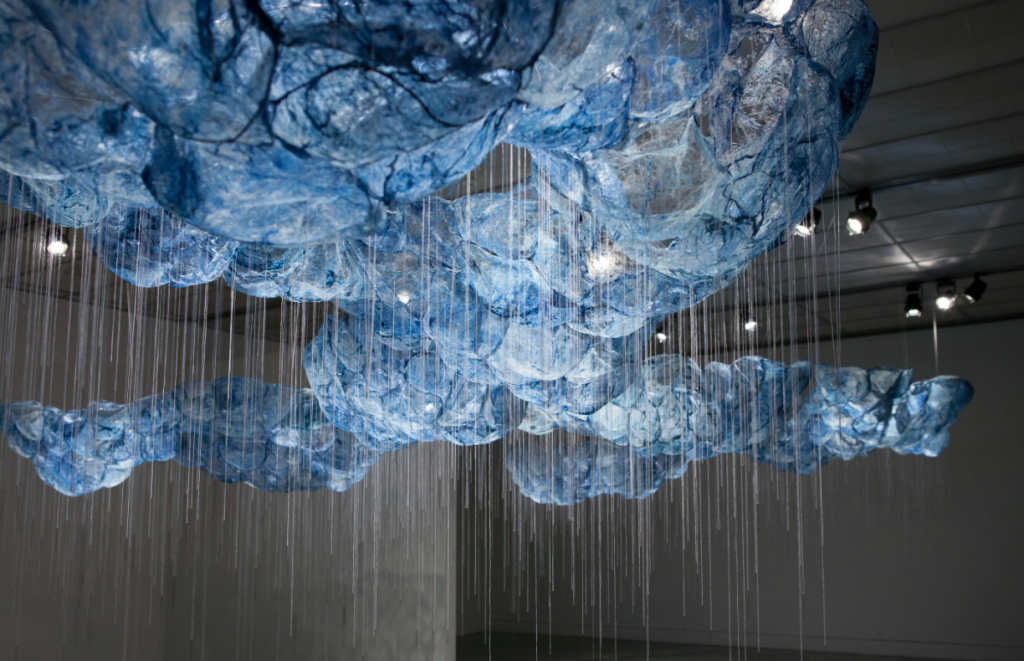
After All / Mending the Sky
2018–ongoing
Beili Liu
Silk, cyanotype, sewing needle, thread, wire, hardware
Variable
© Beili Liu Studio
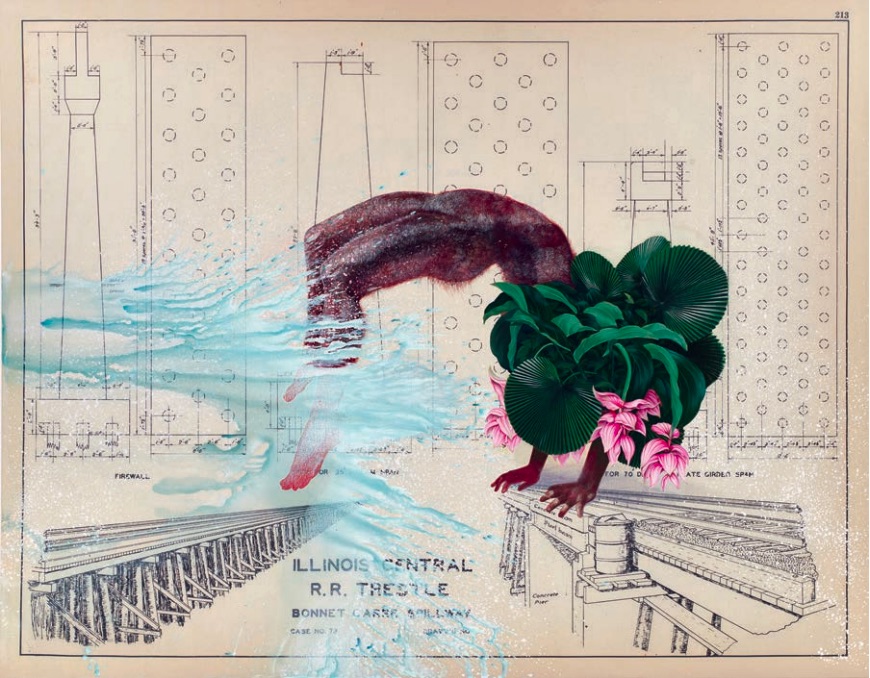
the trace, whether we are attending to it or not (a space for each other’s breathing)
2019
Firelei Báez
Acrylic, oil, and transfer on archival printed canvas
90 x 114 3/8 in.
Museum purchase, Carmen Donaldson Fund, Courtesy of the artist and James Cohan, New York, Photo by Phoebe d’Heurle, © Firelei Báez
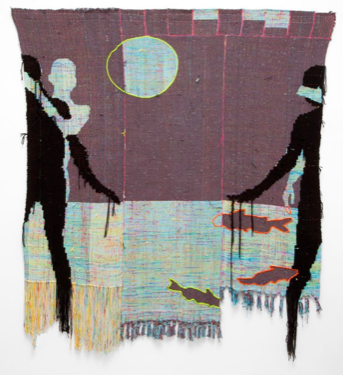
If you feed a river
2019
Diedrick Brackens
Museum purchase, Carmen Donaldson Fund, © Diedrick Brackens
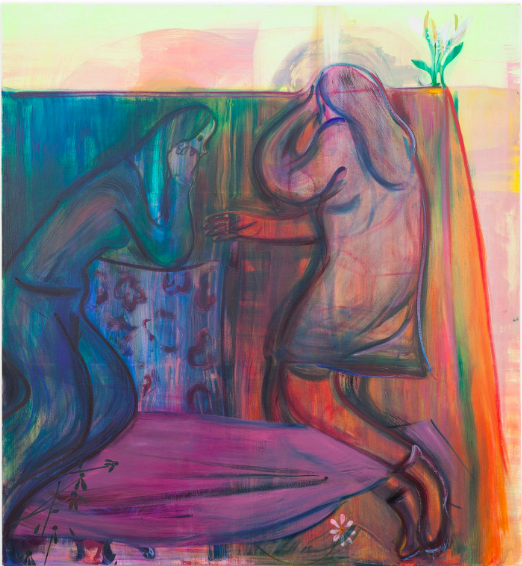
Burnout in Shredded Heaven
2018–2019
Heidi Hahn
Oil on canvas
80 x 74 in.
Museum purchase with funds provided by Kevie Yang, © Heidi Hahn
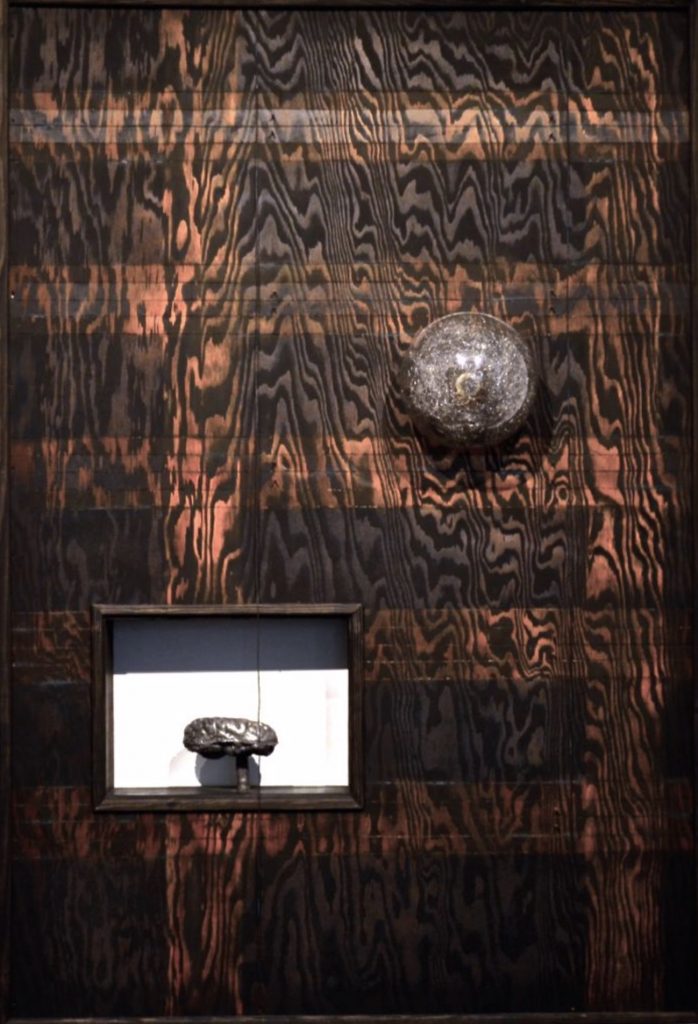
A Sense of Memory
2015
Ana Hernandez
Cast metal, found glass, found wood, found metal, found nails, steel wire, steel wool, oil pastel, wood stain on found wood panel in artist’s frame
60 x 41 x 14 in.
Museum purchase, © Ana Hernandez
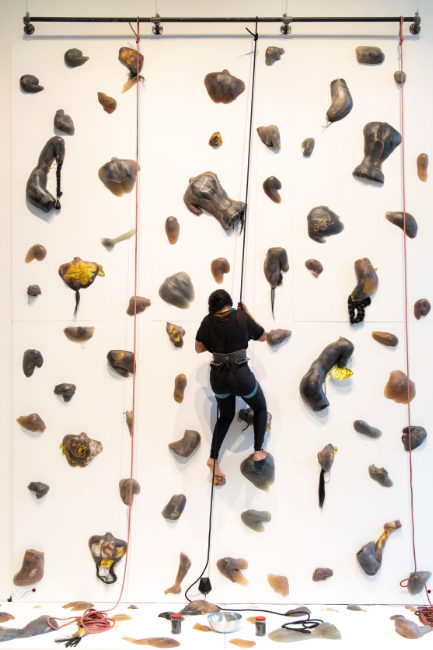
Braidrage
2017–ongoing
Baseera Khan
Indoor rock-climbing wall made from 99 unique poured dyed resin casts of the corners of the artist's body, embedded with wearable Cuban chains, hair, and hypothermia blankets
Variable
Collection of the artist, Installation view at the University of Albany, Photo by Ariana Sarwari, © Baseera Khan
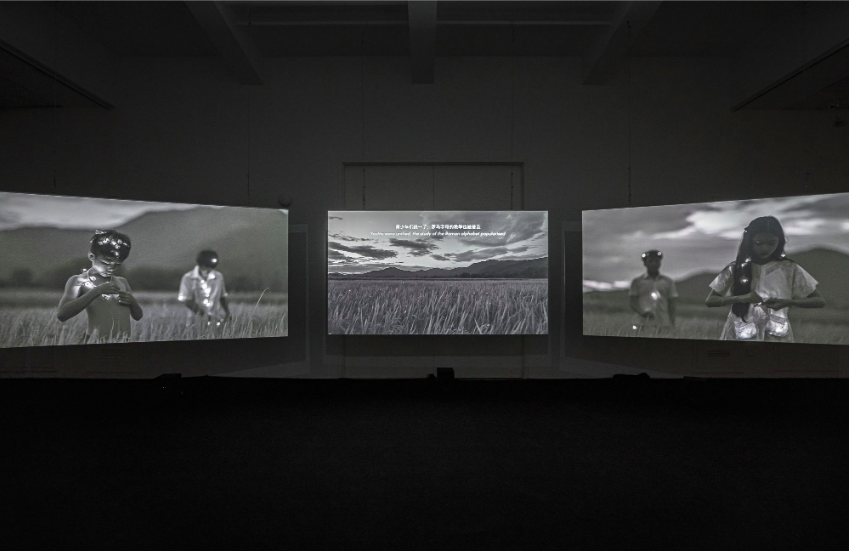
Mute Grain
2019
Thao Nguyen Phan
Three channel video installation, 15:45 mins, loop, black and white
Collection of the Artist © Thao Nguyen Phan
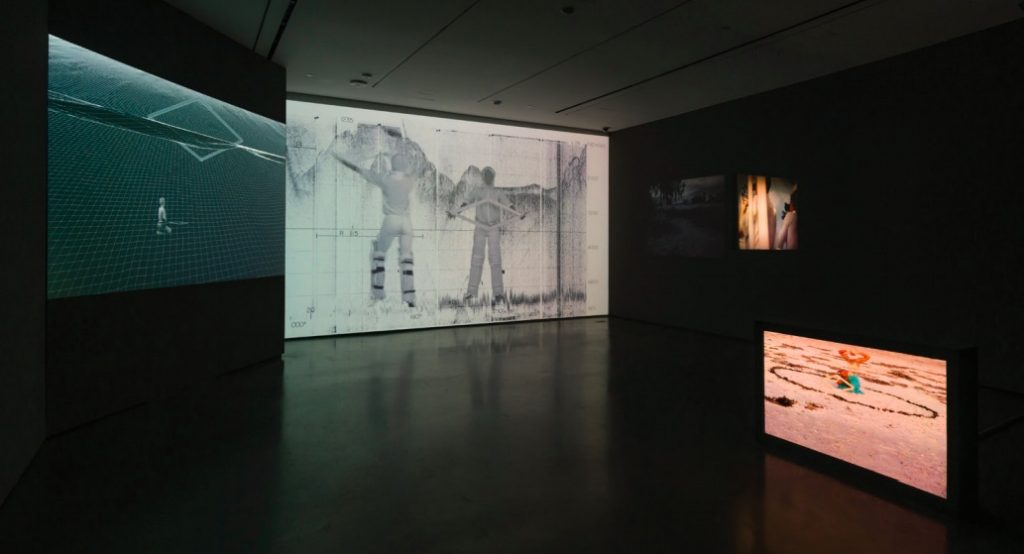
Un chemin escarpé / A steep path
2018
Jamilah Sabur
Five-channel video, Installation from the Hammer Museum, Color, sound, 10:27 min (Edition 1/2)
Museum purchase, Carmen Donaldson Fund, Courtesy of the Artist and Nina Johnson, Miami. Photo by Jeff McLane © Jamilah Sabur
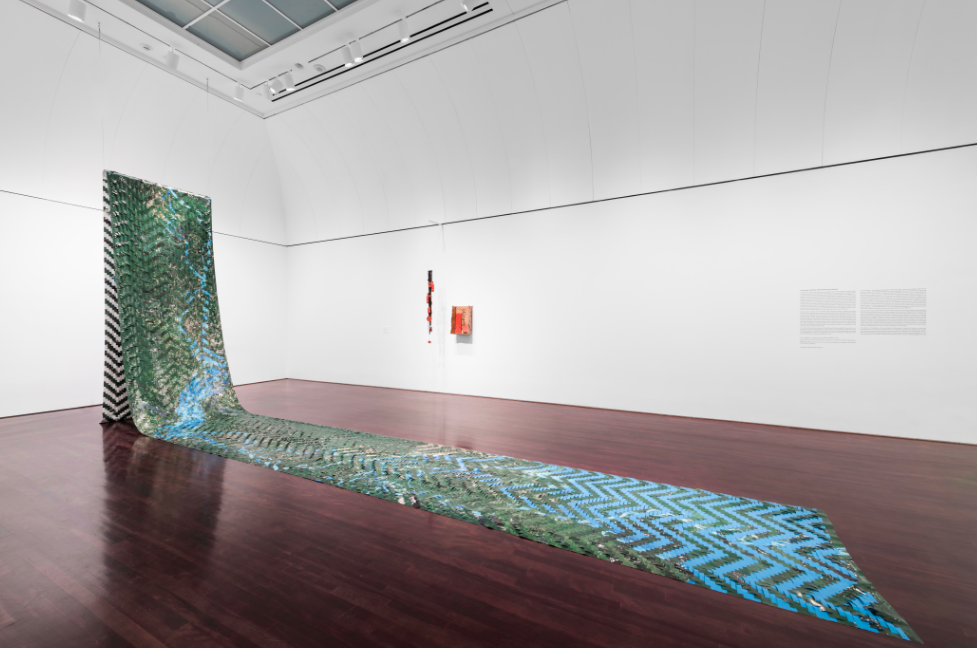
Encontro das Aguas (Meeting of Waters)
2016–2018
Clarissa Tossin
Woven archival inject print on vinyl
4 ½ x 50 ft.
Collection of the artist, © Clarissa Tossin
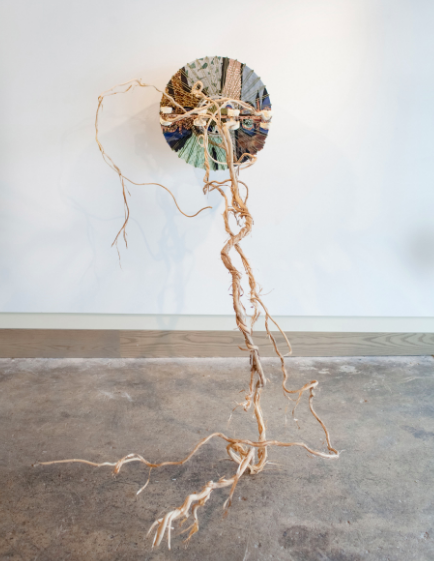
Lore
2017
Lorna Williams
Plaster teeth, vines, plumbing hardware, light fixture
64 x 32 x 72 in.
Museum purchase © Lorna Williams

